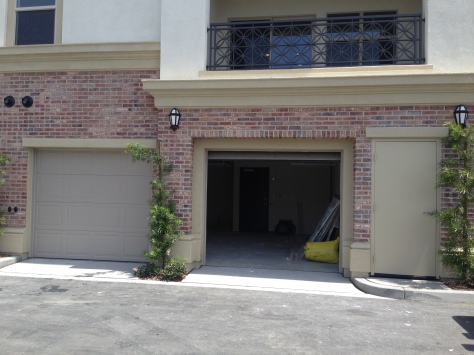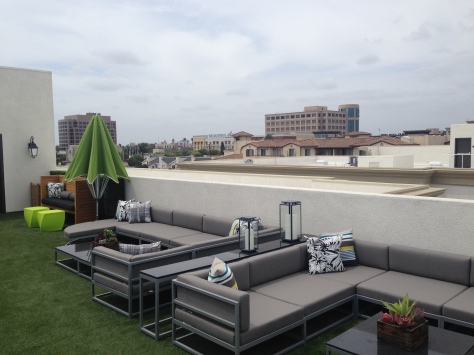As a society, we’ve been trying to design housing to provide the best balance of proximity with open spaces and quiet. As a result, some far-fetched ideas never make it and some are built with lofty expectations.

At the height of the housing boom of ’04-’06, investors were literally drowning in credit lines and cash and the housing market seemed like a no-brainer for growth. Since the new generation of buyers didn’t seem to mind about shrinking backyard spaces (or no backyard at all), builders started to think even bigger.

 With successful rejuvenated Downtown areas like the Gaslamp District in San Diego gaining headlines, it became easier to pitch to investors that buyers have come full circle: Suburbs are out; downtown living is in. California freeways are getting slower and slower. Couples are getting married much later in life and having less kids or no kids at all.
With successful rejuvenated Downtown areas like the Gaslamp District in San Diego gaining headlines, it became easier to pitch to investors that buyers have come full circle: Suburbs are out; downtown living is in. California freeways are getting slower and slower. Couples are getting married much later in life and having less kids or no kids at all.


After all, everyone longs for living like the characters of “Friends” and “Seinfeld” where they’re only a short elevator ride away from bars, subway access and, shopping, right?
Well….sort of. There are many factors that made these mid-rise developments immediate flops. For starters, the lifestyle would not be like Seinfeld because most would still need to commute to just about everywhere. Public transportation in Southern California has always been very limited due to our love for cars and freeways. Socially, Orange County has been notorious for being “snobs” that don’t even know who lives next door. Forget about the idea of going downstairs to the local bar or hangout where “everyone knows your name.”
While the fancy marketing and amenities were enough to get crowds to the models, buyers knew the idea was a contradiction on many levels.


Going Urban 2.0
After the countless price reductions and conversions to rentals, builders were able to learn many lessons.
Brookfield’s “The Domain” community is directly across the street from The Packing District of Anaheim.


No project was impacted by the flop more than Anaheim’s “A-Town” project that was supposed to take cues from San Diego’s Petco Park.

From the OC Register:
“Gone are the grandiose ideas to change Anaheim’s skyline with 11 high-rises, an urban village of 2,681 homes and 150,000 square feet of office and retail space near Angel Stadium….
Plans now call for building 1,400 to 1,742 condominiums and apartments, along with up to 50,000 square feet of shopping and office space grouped into eight neighborhoods spanning 43.1 acres, according to a revised development application submitted Thursday to the Anaheim Planning Department.”
After reading the article, most of the blame was placed on the housing market. I have a feeling the builders are in denial or just don’t get it.


The biggest snobs are in the bay area. I have a cousin that lives in Walnut Creek. OC its a bad repute because its Republican and LA which has more liberal snobs doesn’t. In fact folks in OC knows who is next door more than LA unless its a Latino part of LA. Also, being a snob is based upon your politics, OC thinks they are friendly and LA is not while LA thinks they are friendly and OC isn’t.In 20 years, who knows the midrise might make it. A lot of the old-time conservatives in Anaheim hate it, so it didn’t get much of a chance to begin with.. They think Anaheim should all be tract houses which doesn’t worked that much in the high cost of housing and large Latino population that can’t afford most of the housing except 15 percent. In fact Uber and Lyft and BMW will reduce driving in OC by 20 percent by 2025 since they will have driveless cars and about 20 percent of the population by them will work by remote. The midrise will probably work in Anaheim in the next decade as their is less space and the demographics might change from being mainly poorer Latinos to more of a mixed.
In order for the mid-rise/higher density concept to work, I think it needs to have several elements to combat the oxymoron of the “urban living” design cues. The urban lifestyle is associated with being able to access public transportation and walk short distances to all the needs of everyday life: grocery, restaurants, cafes, shopping, bars, clubs, and entertainment.
Currently in Orange County, the lifestyle still revolves heavily around getting in your own car and driving somewhere. With that said, the only way these types of properties would be able to compete in the Real Estate market is to offer direct garage access (like The Domain in Anaheim) or to price them accordingly.
At the time of their releases, lofty projects like Stadium Lofts in Anaheim and Astoria in Irvine didn’t present a good alternative to the homes that were competing at the same price point and the buyers responded (by not responding) accordingly.
Well I like what you said,As a junior i want some suggestion. Check my video.Thanks http://ceesty.com/wmofVm